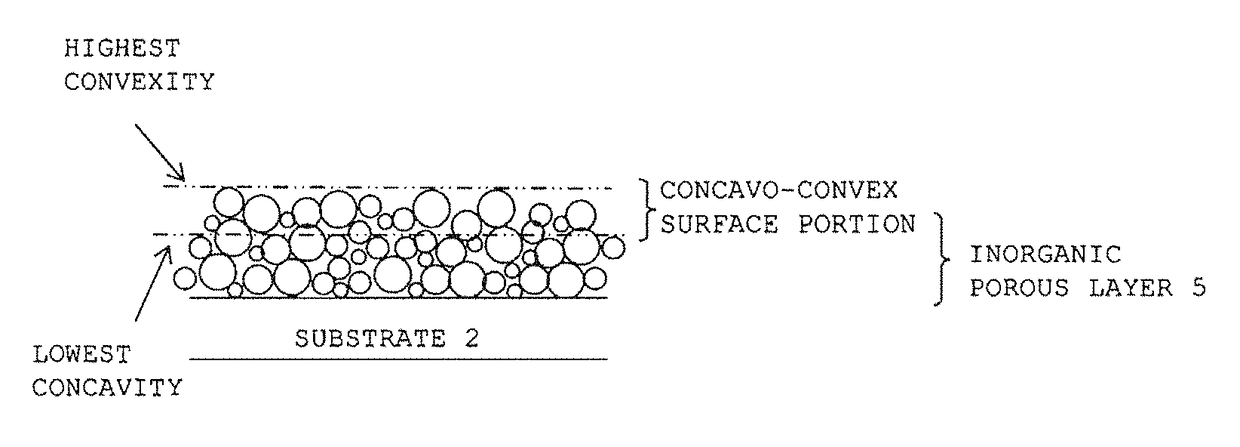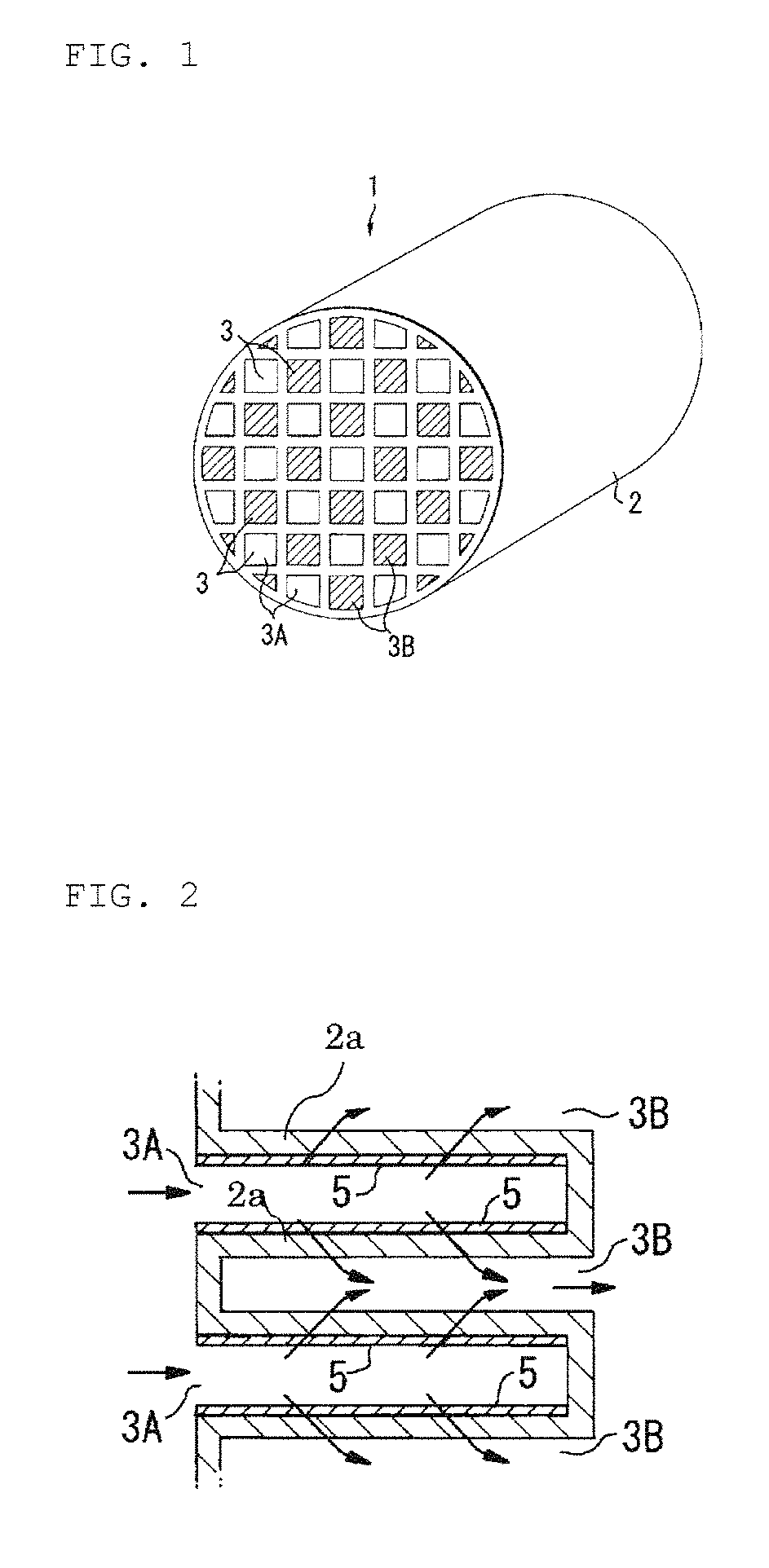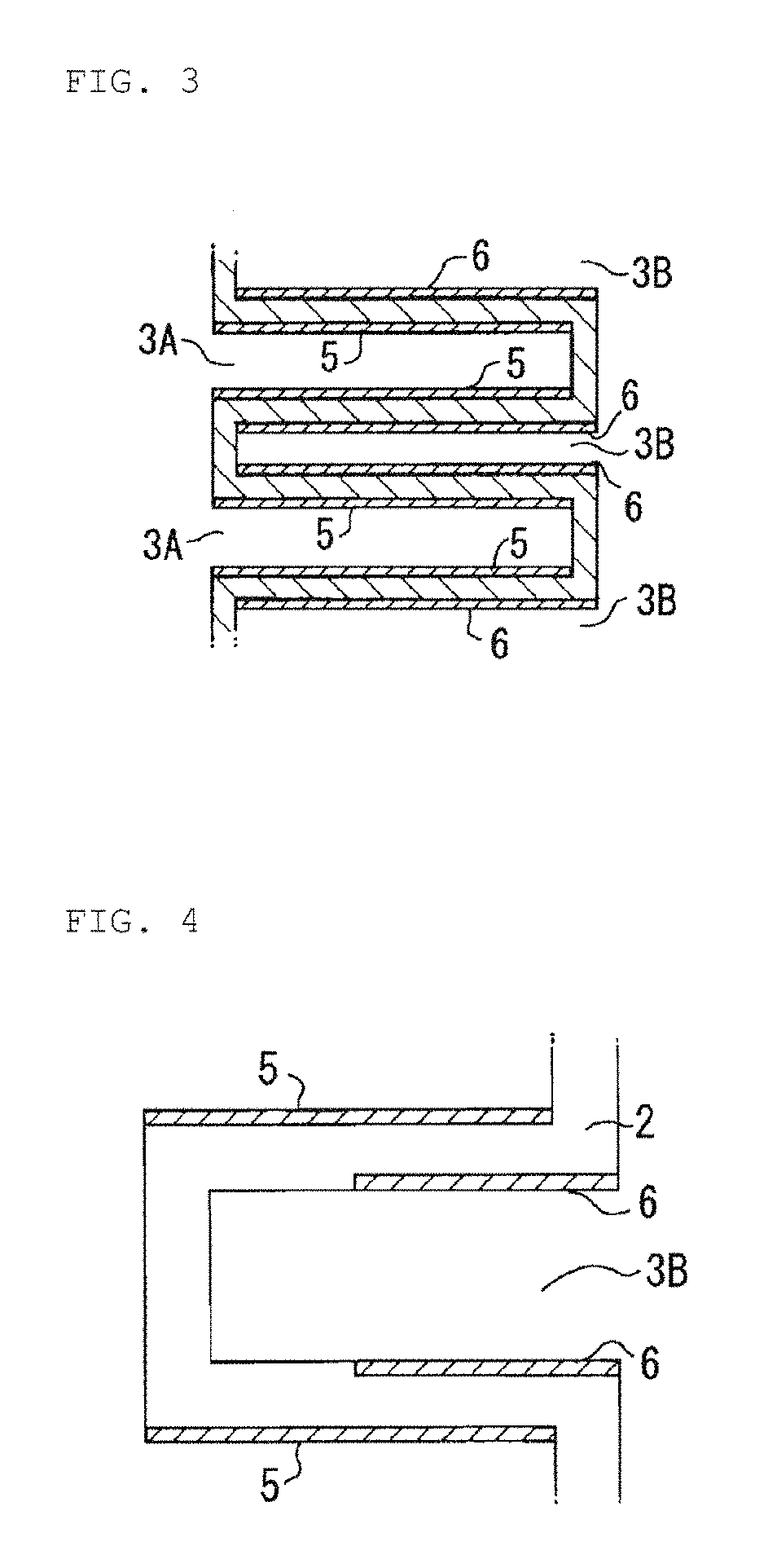Diesel particulate filter and exhaust gas purification device
- Summary
- Abstract
- Description
- Claims
- Application Information
AI Technical Summary
Benefits of technology
Problems solved by technology
Method used
Image
Examples
example 1
[0121]A silver nitrate aqueous solution and a palladium nitrate aqueous solution were impregnated with Al2O3 (80 parts by mass) and were evaporated to dryness at 120° C. This material was calcined at 800° C. for 20 hours, and Ag and Pd were subjected to an alloying treatment to obtain AgPd alloy particulate firing catalyst powder. In this case, a mole ratio between Ag and Pd at the AgPd alloy was 5:1.
[0122]The AgPd alloy particulate combustion powder of 200 g, an alumina sol of 500 g having an alumina concentration of 20% by mass, and deionized water of 300 g were mixed with each other and the obtained mixture were subjected to a wet grinding treatment using a ball mill, thereby obtaining an AgPd slurry.
[0123]At this time, the ball mill was set to the following conditions: an alumina ball mill (size of 5 mm) was used; a number proportion of the ball mill with respect to the amount of the slurry was 30%; the number of rotations was 20 rpm; and a rotational time was 5 hours.
[0124]Para...
example 2
[0127]A particulate filter (sample) was obtained in the same manner as in Example 1 except that the conditions of the ball mill in Example 1 were changed into the following conditions: an alumina ball mill (size of 5 mm) was used; a number proportion of the ball mill with respect to the amount of the slurry was 30%; the number of rotations was 30 rpm; and a rotational time was 5 hours. In this case, a thickness of the inorganic porous layer was 30 μm.
example 3
[0128]A particulate filter (sample) was obtained in the same manner as in Example 1 except that the conditions of the ball mill in Example 1 were changed into the following conditions: an alumina ball mill (size of 10 mm) was used; a number proportion of the ball mill with respect to the amount of the slurry was 30%; the number of rotations was 20 rpm; and a rotational time was 5 hours. In this case, a thickness of the inorganic porous layer was 30 μm.
PUM
| Property | Measurement | Unit |
|---|---|---|
| Fraction | aaaaa | aaaaa |
| Fraction | aaaaa | aaaaa |
| Thickness | aaaaa | aaaaa |
Abstract
Description
Claims
Application Information
 Login to View More
Login to View More - R&D
- Intellectual Property
- Life Sciences
- Materials
- Tech Scout
- Unparalleled Data Quality
- Higher Quality Content
- 60% Fewer Hallucinations
Browse by: Latest US Patents, China's latest patents, Technical Efficacy Thesaurus, Application Domain, Technology Topic, Popular Technical Reports.
© 2025 PatSnap. All rights reserved.Legal|Privacy policy|Modern Slavery Act Transparency Statement|Sitemap|About US| Contact US: help@patsnap.com



